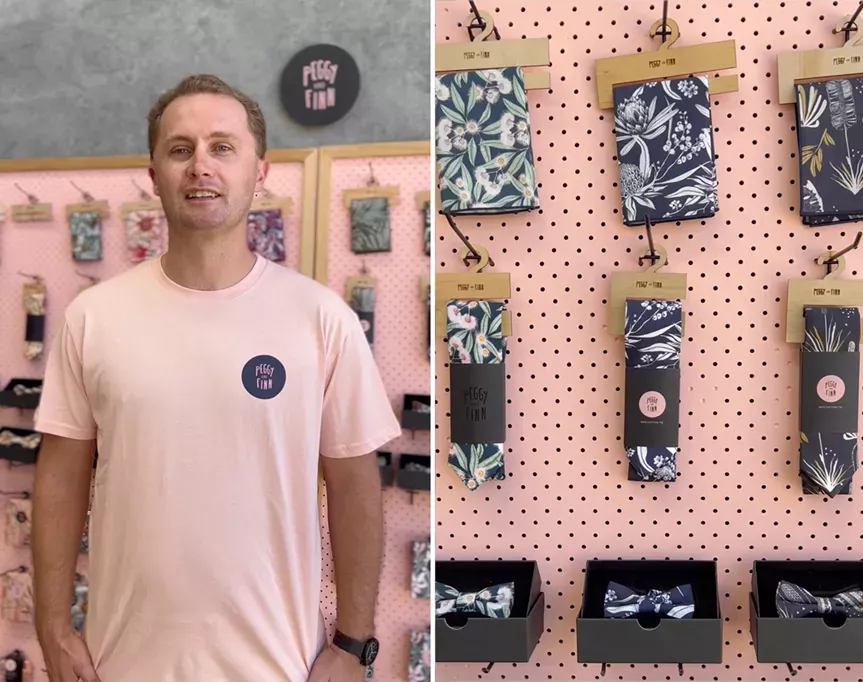making the freelance lifestyle work for you
Six lessons from two first-rate freelance creatives.
 For those who’ve never tried to go it alone before, freelance life can look like a commercial for tropical shampoo. Do a little work in the morning, go swim in a waterfall, eat a pineapple, downward dog on the beach, send three emails, call it a day. But for many freelancers, the reality is quite different. You could have a cacophony of invoices and emails, appointments, deadlines whooshing by, new clients and bills, all while figuring out how to pay yourself (both now and in the future).
For those who’ve never tried to go it alone before, freelance life can look like a commercial for tropical shampoo. Do a little work in the morning, go swim in a waterfall, eat a pineapple, downward dog on the beach, send three emails, call it a day. But for many freelancers, the reality is quite different. You could have a cacophony of invoices and emails, appointments, deadlines whooshing by, new clients and bills, all while figuring out how to pay yourself (both now and in the future).
So how can you make freelance life work for you? Thanks to the friendly folk at Xero, we sat down with two freelance powerhouses, creative designer Kit Palaskas and photographer extraordinaire Paul Hermes, to get their top freelance tips. First lesson: don’t keep your receipts in the bottom of your bag.  Freelance photographer Paul Hermes and creative designer Kit Palaskas
Freelance photographer Paul Hermes and creative designer Kit Palaskas
ease the transition There are two ways to jump into freelance: head first or feet first. In Paul’s experience, feet first is always best, which means having a transition plan in place. “You have to make sure you have a strong network before you leap,” he says. “Especially when you have a mortgage and kids and stuff, you can’t just pull the ripcord and hope for the best.” Kit agrees. When she made the move to freelance, she jumped in with no planning, which made everything harder. If you can, get some clients on the books and money in the bank before making the switch. “You need to set yourself up for success before jumping in. For me that was saving some money, so I had a pool to draw from. I wasn’t starting at zero.”
set boundaries Working full-time freelance is a bit like all your childhood dreams come true: no boss, no-one telling you what to do, working in your underwear, no limits. Of course, as any failed first-year uni student will tell you, ‘no limits’ doesn’t always work out. For Kit, boundaries are essential to separate work life from home life, otherwise all that freedom can start to feel like a trap. “You have to protect your wellbeing and personal space,” Kit says. “You’re going to want to say yes to everything, but try to set client expectations right from the start. It’s also a good idea to separate your workspace from your living space – even if it’s just a desk or a small alcove. Don’t eat your breakfast there. Don’t leave dirty washing there.”
get your books organised Ask any freelancer and they’ll tell you: organisation and discipline are worth as much as talent (maybe more, to be honest). “I was told beforehand that freelance would be 70% business and 30% shooting,” Paul says. “I wouldn’t say it’s that bad, but it’s definitely 50/50. When I started I really balls’d it up, just creating loose invoices everywhere. Red for not paid, orange for waiting, green for paid. That kind of thing.” Kit says getting on top of her finances was the most important step. “In the early days I would throw receipts in my bag and hope they’d be there at tax time,” she laughs. “I had this idea in my head that I was bad with money, and I think I played into that.” The lesson here? You’re not bad with money, you just need to get organised. And there are plenty of people and tools that can help.
outsource where necessary Most freelancers are creative types, which means they tend to view spreadsheets and account books like some strange, alien language. And that’s okay. Kit says you don’t need to be a financial whiz to go freelance. That’s why God invented accountants/bookkeepers – and Xero. “Programs like Xero are a lifesaver,” she says. “Once you set up the systems you can keep track of your incoming payments and expenses. And now everything’s online, so I don’t have to wade through paper receipts.” Paul agrees that accounting software like Xero frees his brain up to focus on the creative side of the business. “Just being able to ping out an invoice, and once it comes through the whole thing is reconciled, it’s amazing,” he says. “I just hand it to my accountant and they tell me what I owe. Really takes the stress out of things.”
balance confidence with caution This one’s tricky. To be good at freelance you need to believe in yourself, but you also need to know when to play things safe. “You’ve got to take a leap of faith,” Paul says. “And it does feel like a leap. You’ve got to have a bit of confidence in your ability, but also be cautious about the transition.” Kit agrees – it all comes back to self-belief. “You have to sell yourself,” she says. “Many people don’t talk about it when starting a business, but you need confidence to put yourself out there. I travelled to America in 2010, and I was really taken aback by the confidence of people there. In Australia, we don’t sell ourselves enough, which is a shame.” In other words, remember, there’s a reason you wanted to go freelance – you felt like you had something to offer. Don’t lose that self-belief. It’s your rocket fuel.
nail your offering In the beginning, it helps to sit down and really define your offering. In other words: what do you actually do. Be specific here, because clients will want to know specifics. “Make sure you have a good offering, and know what that offering is,” Paul says. “Because if you go out and say, I’ll just give this a crack, people will want to know what your specialties are. Are you digital? Are you print? Do you make logos? Corporate brochures? Everyone’s got a strength, so find where your strengths lie and lean into that.” There’s nothing wrong with being a bit of a freelance generalist (and that might help get some early runs on the board), but most of the value and most of the clients come from specialization. Find your niche and own it. “I started out making bespoke handmade props,” Kit says, “and that was a niche service that no-one was offering at the time. It helped me get some big clients under my belt.”
These helpful tips were brought to you in partnership with our pals at Xero. Whether you lead a small team or are going it alone, Xero’s online accounting helps you do business, but better. Find out more on the Xero website.



.png&q=80&h=682&w=863&c=1&s=1)








.jpg&q=80&w=316&c=1&s=1)













.jpg&q=80&w=316&c=1&s=1)










